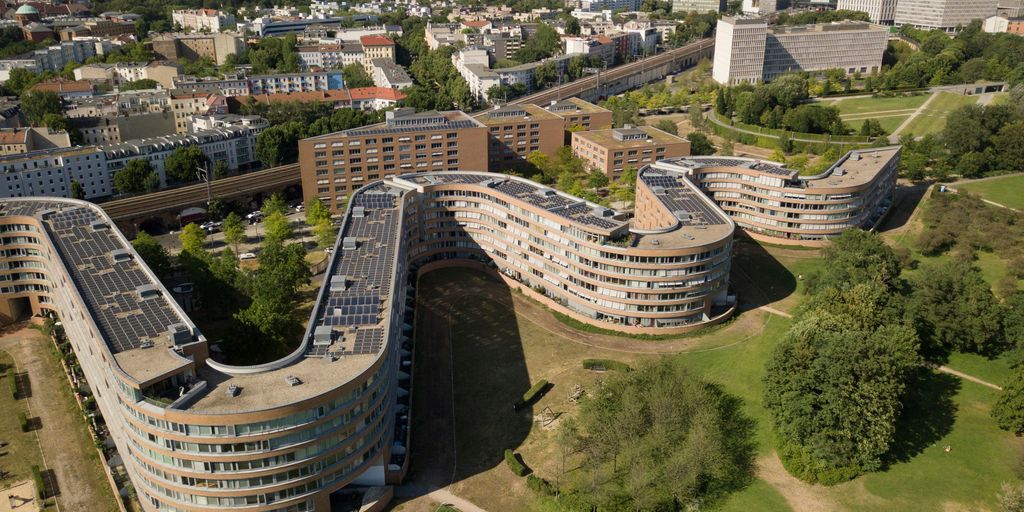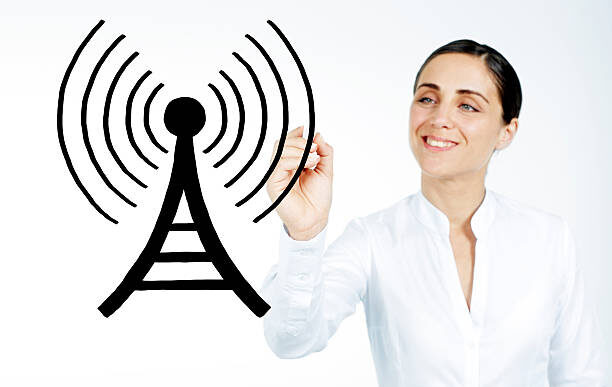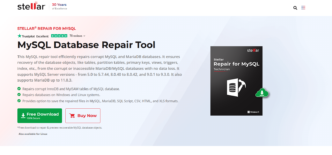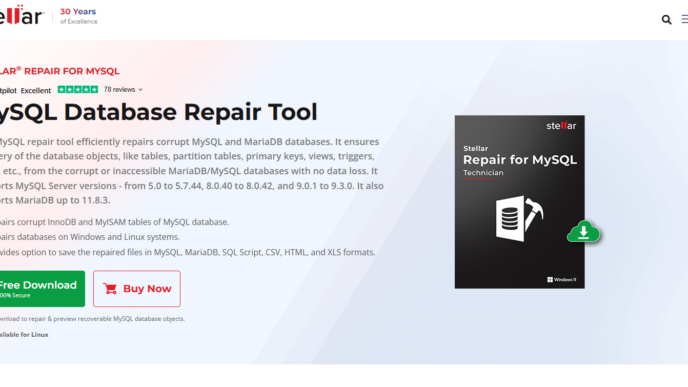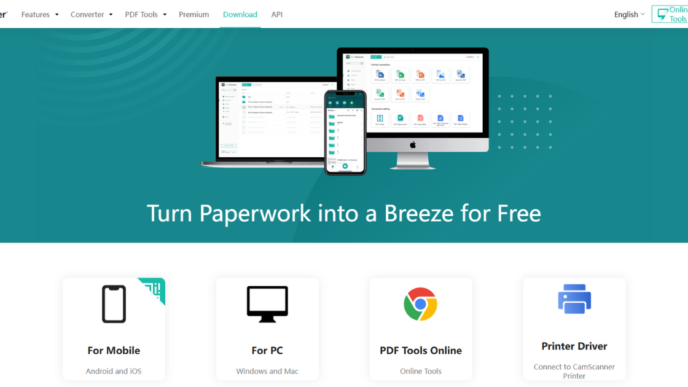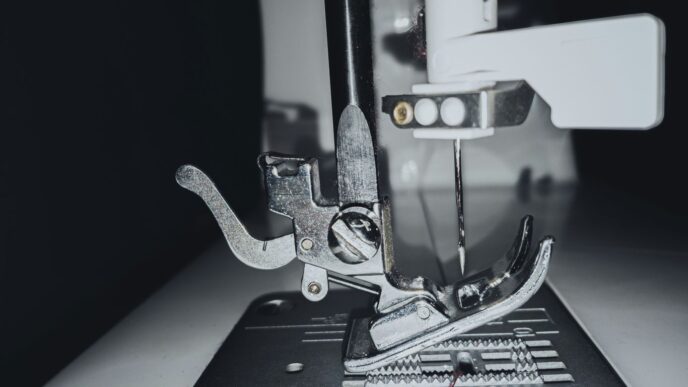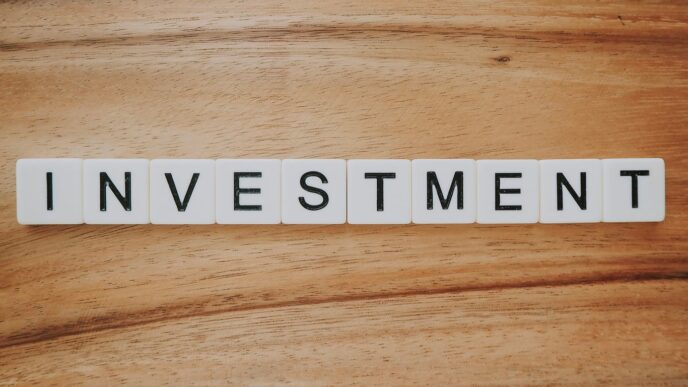Drones used to be just for fun, like a cool toy. But now, they’re way more than that. They’re becoming serious tools that can do a lot of different jobs across many industries. As we look ahead, it’s pretty clear that future drones are going to get even better. This article will talk about some of the exciting things coming up, like how they’ll be able to do more and how they’ll work with other new tech.
Key Takeaways
- Future drones will fly themselves more, using smart computer programs to make quick choices and process information right away.
- You’ll see future drones everywhere in regular electronics, getting smaller and smarter so they’re easy to carry and use.
- Future drones are going to change how many jobs get done, from checking crops and buildings to moving packages around.
- New future drones will have better sensors and designs that use less power, and they’ll connect with smart home devices and factory systems.
- Safety is a big deal for future drones, with new ways to avoid crashes and better rules to make sure everyone is safe.
Autonomous Flight Takes Center Stage
It’s amazing how far drones have come! What started as a cool hobby is now transforming industries. One of the biggest changes is how drones are becoming more autonomous. They’re not just remote-controlled toys anymore; they’re getting smart.
AI-Powered Autonomy and Real-Time Decision-Making
Drones are getting brains! Thanks to AI, they can now analyze data and make decisions without needing someone constantly at the controls. This AI is transforming drone technology by allowing drones to do things like:
- Figure out the best flight path on their own.
- Spot obstacles and avoid them.
- Even react to changing conditions in real-time. It’s like they’re thinking for themselves up there!
Instant Data Processing for Future Drones
Imagine a drone that can take pictures, analyze them instantly, and then change its mission based on what it sees. That’s the power of instant data processing. Onboard AI can analyze real-time imagery, environmental conditions, and mission-critical data. This means:
- Drones can adjust their flight paths automatically.
- They can detect objects of interest without human help.
- They can provide useful information right away, without having to send data back to a central location.
Faster Response Times with Advanced AI
When every second counts, AI can make a huge difference. Think about emergency situations, like search and rescue missions. Drones with advanced AI can:
- Quickly assess the situation.
- Identify people who need help.
- Guide rescue teams to the right location, all much faster than traditional methods. It’s about situational awareness in high-stakes missions.
AI also helps with things like:
- Infrastructure inspections.
- Precision farming.
- Disaster response.
The Future of Drones in Consumer Electronics
Drones have really taken off, haven’t they? It’s not just hobbyists anymore; everyone seems to want one. Let’s look at where things are headed in the consumer space. I remember when drones were clunky and expensive, but now you can get some pretty impressive models for a reasonable price. It’s wild.
Increased Integration and Innovation
Drones are becoming more integrated into our daily lives. Think about it: delivery services, security monitoring, even just snapping cool photos on vacation. As tech advances and regulations catch up, we’ll see even more uses. It’s not just about flying cameras anymore; it’s about how drones can make our lives easier and more interesting. Enterprise Drone Management Solutions are becoming more sophisticated, making it easier to manage fleets of drones for various applications.
Enhanced Autonomy and Decision-Making
Imagine drones that can fly themselves, avoid obstacles, and make smart decisions without you having to do much. That’s the future. AI and machine learning are making this a reality. Drones will be able to understand their environment better, react to changes in real-time, and perform tasks more efficiently. This opens up a ton of possibilities, from autonomous deliveries to environmental monitoring. I’m excited to see how this plays out.
Miniaturization for Portable Future Drones
Size matters, especially when it comes to consumer electronics. The trend is clear: smaller, more portable drones. Imagine a drone that folds up to the size of your smartphone. You could take it anywhere and launch it in seconds. This kind of portability will make drones even more accessible and useful for everyday tasks. Think quick aerial photos, navigation in unfamiliar areas, or even personal security. The possibilities are endless. I can’t wait for the day I can just slip a drone into my pocket and go.
Revolutionizing Industries with Future Drones

Drones are no longer just cool gadgets; they’re becoming essential tools across various industries. The advancements we’re seeing are truly game-changing, and it’s exciting to think about the possibilities. From making farming more efficient to speeding up deliveries, drones are poised to reshape how we do business. It’s not just about replacing existing methods, but also about creating entirely new opportunities. The integration of drones is streamlining operations and opening doors to innovation in ways we couldn’t have imagined a few years ago.
Precision Agriculture and Environmental Monitoring
Imagine drones equipped with advanced sensors that can analyze crop health in real-time. Farmers can use this data to optimize irrigation, fertilization, and pest control, leading to higher yields and reduced waste. It’s not just about quantity, but also about quality. Plus, drones are playing a crucial role in environmental monitoring, helping us track deforestation, monitor wildlife populations, and assess the impact of pollution. The data they collect is invaluable for conservation efforts and sustainable resource management. For example, precision agriculture is becoming more accessible to smaller farms thanks to drone technology.
Advanced Industrial Inspections
Inspecting infrastructure like bridges, power lines, and wind turbines can be dangerous and time-consuming. Drones offer a safer and more efficient alternative. Equipped with high-resolution cameras and thermal sensors, they can detect cracks, corrosion, and other defects that might be missed by the human eye. This allows for proactive maintenance, preventing costly repairs and ensuring the safety of critical infrastructure. Think about the time and resources saved by using drones instead of sending workers to climb tall structures or navigate hazardous environments. It’s a win-win situation for everyone involved. Here’s a quick look at how drones are improving inspections:
- Safety: Reduces risk to human inspectors.
- Efficiency: Faster data collection and analysis.
- Cost-Effectiveness: Lower inspection costs compared to traditional methods.
Transforming Logistics and Delivery Services
The idea of drones delivering packages might have seemed like science fiction a few years ago, but it’s quickly becoming a reality. Drones can bypass traffic congestion and deliver goods directly to customers’ doorsteps, especially in remote or hard-to-reach areas. This has the potential to revolutionize logistics and delivery services, making them faster, more efficient, and more affordable. Of course, there are still challenges to overcome, such as regulatory hurdles and safety concerns, but the potential benefits are too significant to ignore. Imagine getting your online orders delivered within minutes, or having critical medical supplies delivered to remote clinics via drone technology advancements.
Cutting-Edge Concepts and Design for Future Drones
New Sensor Systems and Capabilities
Future drones are set to feature a wild array of new sensors, going way beyond just cameras. Think about it: advanced LiDAR for super-detailed 3D mapping, hyperspectral sensors to analyze materials, and even sensors that can detect gas leaks or radiation. These new sensors will open up a whole new world of applications. It’s not just about seeing; it’s about understanding what you’re seeing. For example, imagine construction sites using accurate distance measurements to ensure safety.
Energy-Efficient Designs for Extended Flight
One of the biggest limitations of current drones is battery life. Future designs are focusing heavily on energy efficiency to keep drones in the air longer. This includes:
- Better Batteries: Solid-state batteries and other next-gen technologies promise higher energy density.
- Aerodynamic Improvements: New wing designs and materials will reduce drag.
- Solar Power Integration: Imagine drones that can recharge themselves in flight!
These improvements will be crucial for applications like long-range delivery and infrastructure inspection. Optimized energy distribution will be key.
Integration with Smart-Home and Industrial IoT Platforms
Future drones won’t just be flying around on their own; they’ll be integrated into larger networks. This means seamless communication with smart homes, industrial IoT platforms, and other devices. Imagine a drone that automatically patrols your property and sends alerts to your smart home security system, or a drone that monitors equipment in a factory and sends data to the industrial IoT platforms for analysis. This level of integration will create new opportunities for automation and efficiency. The latest drone technology 2025 will be a game changer.
Enhanced Safety Features and Regulations for Future Drones
The future of drones isn’t just about cool new features; it’s also about making them safer and ensuring they’re used responsibly. We’re seeing big improvements in how drones avoid obstacles and handle emergencies, and governments are working on rules to keep everything in check. It’s a balancing act between innovation and safety, but it’s crucial for the long-term success of the drone industry.
Advanced Obstacle Detection and Avoidance
Drones are getting much better at seeing and avoiding things. New sensors and smarter software mean they can navigate complex environments without crashing. This is a game-changer for everything from package delivery to search and rescue. Think about it: fewer crashes mean less downtime and lower repair costs. Plus, it makes drones safer for everyone around them. Here’s a quick look at some of the tech:
- Improved Altitude Control: Enables precise mapping solutions for agriculture, urban planning, and geology.
- Low-Light & Multispectral Sensors: Detect obstacles in near-dark conditions, crucial for night missions.
- Minimized Downtime: Reduces repair costs and delays by avoiding sudden hazards.
Improved Situational Awareness
Drones are also becoming more aware of their surroundings. They can now process data in real-time, giving operators a better understanding of what’s happening. This includes things like weather conditions, air traffic, and potential hazards. With real-time maps, heat signatures, or structural readings, speeding up decision-making becomes easier. This enhanced awareness helps pilots make better decisions and avoid accidents. Some key features include:
- Automatic Data Uploads: Flight logs and sensor outputs transfer to secure cloud platforms.
- Instant Reporting: Automated analytics dashboards generate concise reports.
- Dual GNSS & Encryption: Redundant satellite navigation and encrypted communication for security.
Evolving Regulatory Frameworks
As drones become more common, governments are working on new rules to regulate their use. This includes things like airspace management, data privacy, and safety standards. It’s a complex process, but the goal is to create a framework that allows drones to be used safely and responsibly. Operators who adapt quickly maintain smoother workflows. Here are some areas of focus:
- Stricter Compliance Standards: New policies for autonomous flights, data privacy, and payload limits.
- Unified Airspace Management: Integration with traditional air traffic systems.
- Advanced Training Programs: Pilots and support staff require ongoing education to master the latest AI tools.
The Impact of Future Drones on Public Safety
Drones are already making a big difference in how we keep people safe, and the future looks even more promising. It’s not just about having a cool gadget; it’s about using these flying robots to respond faster, see more clearly, and ultimately, protect communities better. I think the biggest changes will come from using drones in emergencies and for general security.
Drones as First Responders in Emergencies
Imagine a fire breaks out. Instead of waiting for firefighters to arrive and assess the situation, a drone could be there within minutes, sending back real-time imagery of the scene. This allows commanders to make informed decisions about where to send resources and how to approach the situation. It’s not just about fires, either. Drones can be used in search and rescue operations, natural disasters, and even traffic accidents. They can carry equipment, deliver supplies, and provide communication links in areas where traditional infrastructure is damaged or unavailable.
Enhanced Security and Surveillance Capabilities
Drones offer a new way to keep an eye on things, especially in situations where it’s difficult or dangerous for humans to be present. Think about large events, critical infrastructure, or even border patrol. Drones equipped with high-resolution cameras, thermal imaging, and other sensors can provide constant surveillance, detecting potential threats and alerting authorities. This doesn’t mean we’ll be living in a surveillance state, but it does mean that law enforcement and security personnel will have better tools to protect the public. The key is finding the right balance between security and privacy.
Crowd Control and Wildlife Monitoring
Beyond emergencies and security, drones can also be used for more routine tasks like crowd control at events and wildlife monitoring. Instead of relying on officers on the ground, drones can provide an aerial view of large crowds, helping to identify potential problems before they escalate. They can also be used to monitor wildlife populations, track animal movements, and detect poaching activity. This is a much more efficient and less intrusive way to gather data and protect our natural resources. I think we’ll see more and more of these types of applications as drone technology becomes more accessible and affordable.
Key Insights Shaping Future Drone Technology
User-Friendly Flight Controls and Interfaces
Okay, so remember how clunky drone controls used to be? Like trying to play a video game with a broken controller. Well, those days are fading fast. The focus is now on making drone operation super intuitive. Think simplified interfaces, automated flight adjustments, and controls that even your grandma could probably figure out. This means more people can use drones without needing a pilot’s license, opening up possibilities for all sorts of applications. It’s all about accessibility and ease of use.
Modular Designs and Specialized Payloads
Imagine a drone that’s like a Swiss Army knife – ready for anything. That’s the idea behind modular designs. Instead of buying a whole new drone for each task, you just swap out the payload integration. Need to inspect a bridge? Attach a high-resolution camera. Surveying crops? Swap it for a multispectral sensor. This flexibility saves money and makes drones way more versatile. Plus, it encourages innovation because companies can focus on creating specialized payloads without having to build an entire drone from scratch. Here’s a quick look at some common payloads:
- Cameras: For inspection, surveillance, and photography.
- Sensors: Multispectral, thermal, LiDAR for environmental monitoring and mapping.
- Delivery Systems: For packages, medical supplies, and equipment.
Battery and Power Innovations for Efficiency
Let’s be real, battery life has always been the Achilles’ heel of drones. You get maybe 20-30 minutes of flight time, and then you’re grounded. But things are changing. We’re seeing some serious innovation in latest drone technology when it comes to power. New battery tech, like solid-state batteries, promises higher energy density, meaning longer flight times. And there’s also work being done on wireless charging and even solar-powered drones. The goal? To keep drones in the air longer, so they can do more work without needing constant recharges. This is especially important for applications like search and rescue or long-range delivery. The global drone market is going to be huge!
The Sky’s the Limit for Drones
So, what’s the takeaway from all this? Drones are clearly more than just cool toys now. They’re becoming a big part of how we do things, from helping farmers to keeping an eye on big areas. As technology keeps getting better, these flying machines will just get smarter and more useful. We’re talking about a future where drones do even more, making our lives easier and safer in ways we’re just starting to imagine. It’s pretty exciting to think about what’s next for them.
Frequently Asked Questions
How will AI make future drones better?
Future drones will be much smarter thanks to artificial intelligence. They’ll be able to make decisions on their own, process information super fast, and react quickly to changes. This means they can fly better, avoid problems, and do their jobs more efficiently without needing constant human help.
What’s the big picture for drones in consumer electronics?
Drones will become a bigger part of our everyday lives. They’ll be smaller, easier to carry, and able to do more things. Think of drones that fold up like a phone, ready to take pictures or help you find your way. They’ll also be smarter, understanding their surroundings and helping with tasks like checking crops or inspecting buildings.
How will drones change different industries?
Drones are set to change many jobs. In farming, they’ll check on plants and fields with great accuracy. For industries, they’ll inspect equipment and structures, making it safer and faster. They’ll also change how packages are delivered, making it quicker and more efficient to get things to people.
What new features will future drones have?
New drones will have better sensors to see and understand their environment. They’ll also be designed to use less power, so they can fly for longer. Plus, they’ll be able to connect with smart home devices and industrial systems, making them even more useful.
Will future drones be safer, and how will rules change?
Safety is a top priority. Future drones will have advanced systems to spot and avoid obstacles, making collisions less likely. They’ll also have better ways to know what’s happening around them. Rules and laws for drones will also keep changing to make sure they’re used safely and responsibly.
How will drones help with public safety?
Drones will play a big role in public safety. They can be the first to arrive at an emergency scene, giving a bird’s-eye view to help rescuers. They’ll also improve security by watching over areas and can even help manage crowds or keep an eye on wildlife.


